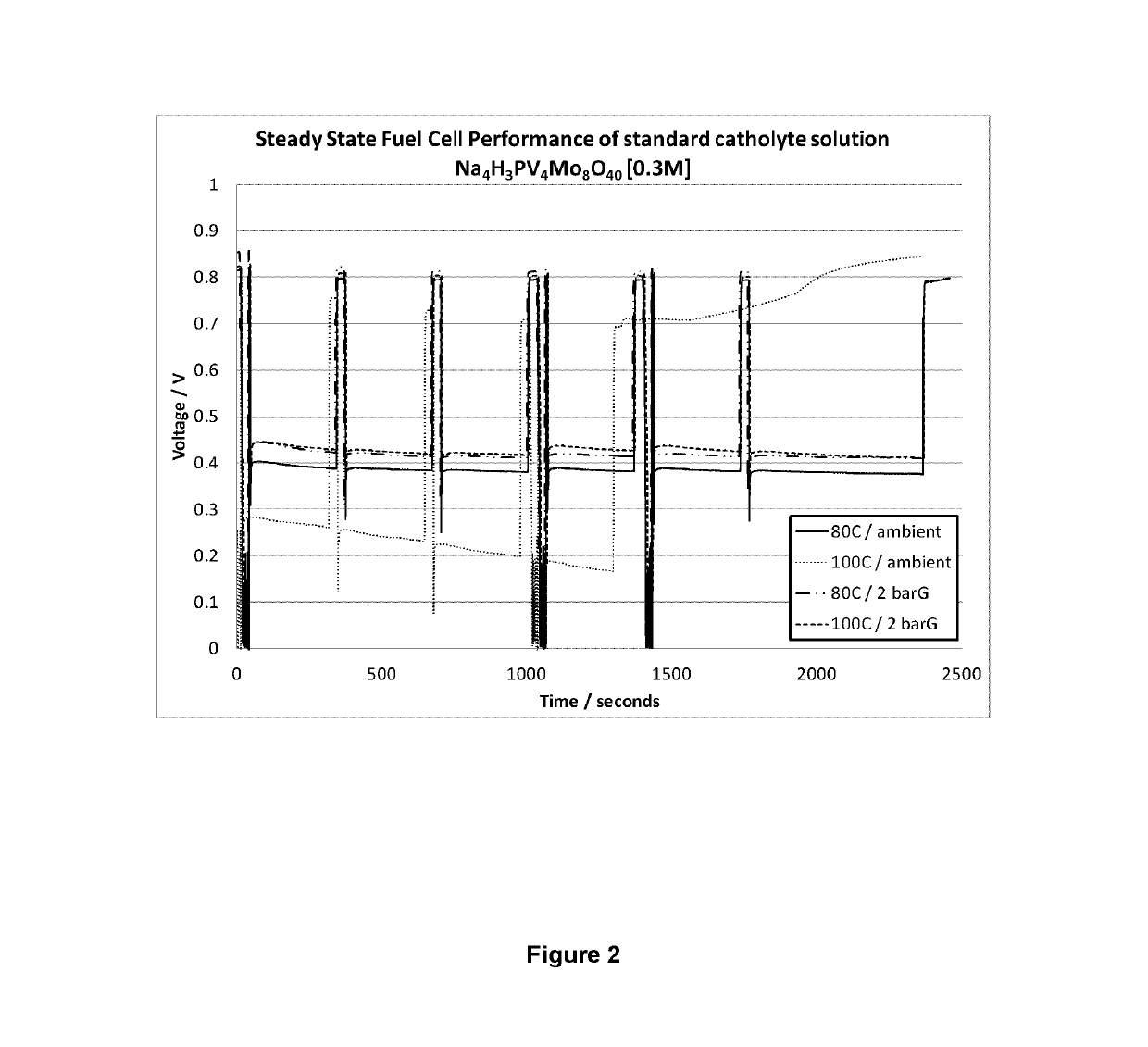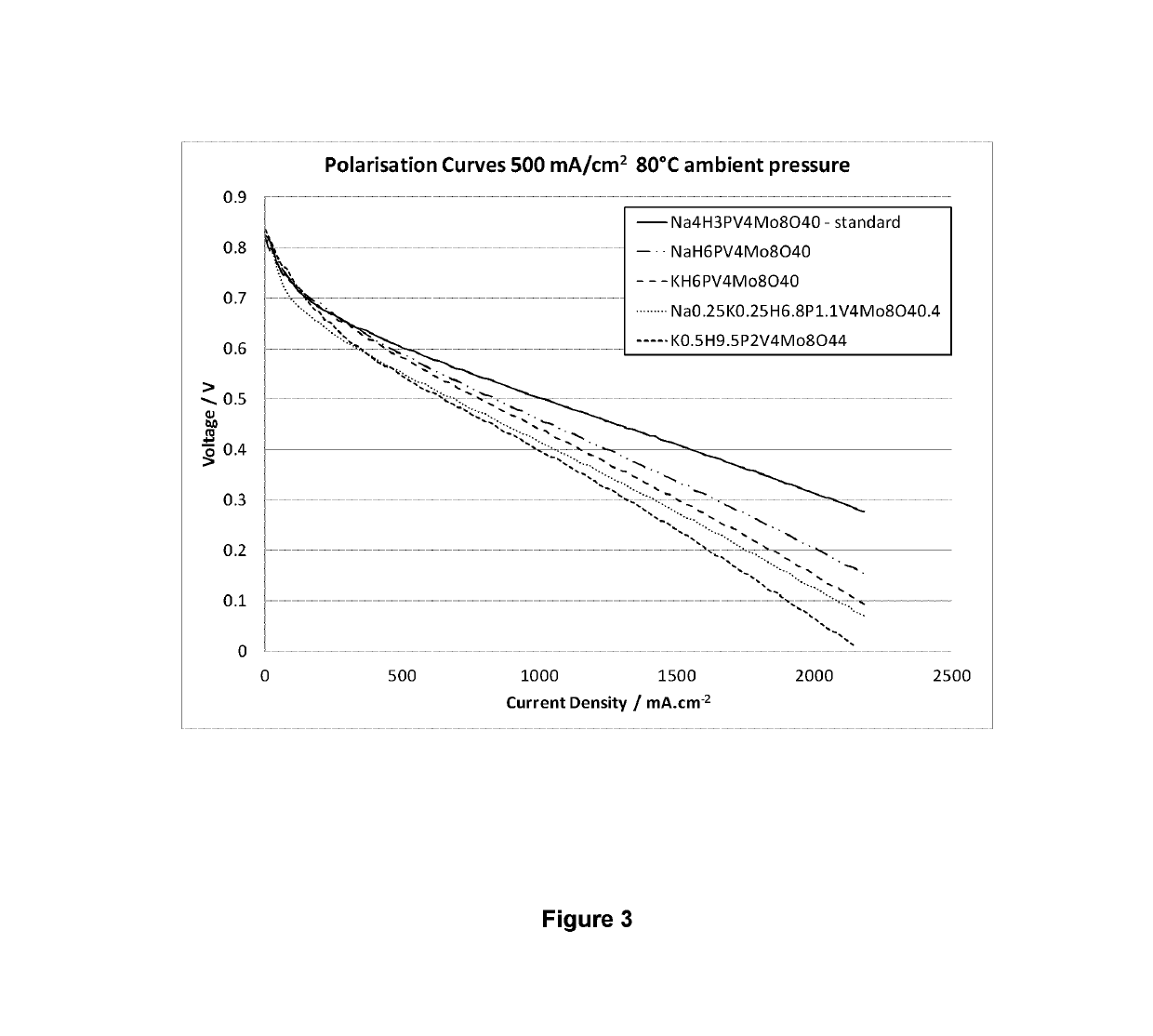Polyozometallates for use at elevated temperatures and pressures
a technology of polyoxometallate and temperature, applied in the field of polyozometal, can solve the problems of loss of potential to some level, inability to fully realize the theoretical potential of a given electrode reaction under defined conditions, and inability to fully realize the theoretical potential, etc., and achieve the effect of increasing the regeneration rate of polyoxometallate, increasing the temperature, and reducing the performan
- Summary
- Abstract
- Description
- Claims
- Application Information
AI Technical Summary
Benefits of technology
Problems solved by technology
Method used
Image
Examples
examples
[0082]Catholyte solutions were prepared i) Na4H3PMo8V4O40; ii) NaH6PMo8V4O40; iii) KH6PMo8V4O40; iv) Na0.25K0.25H6.8P1.1Mo8V4O40.4; v) K0.5H9.5P2Mo8V4O44. All solutions were made to a concentration of 0.3M.
[0083]Under conditions of elevated temperature and / or pressure i) Na4H3PMo8V4O40 is comparative and the other catholyte solutions are all in accordance with the invention.
[0084]Each formulation was tested with a new 25 cm2 active area single cell containing a carbon felt electrode at the cathode, a commercially available reinforced 25 μm thick PFSA membrane which is only catalyst coated on the anode side and a gas diffusion layer with a microporous layer at the anode, nominally 300 μm thick. All cells were subjected to leak and short circuit tests prior to commencement of testing.
[0085]All catholyte formulations were subjected to a protocol utilising the same test conditions. The anode was run flow through with a hydrogen flow rate of 1 L min−1 with the back pressure set to the ha...
PUM
 Login to View More
Login to View More Abstract
Description
Claims
Application Information
 Login to View More
Login to View More - R&D
- Intellectual Property
- Life Sciences
- Materials
- Tech Scout
- Unparalleled Data Quality
- Higher Quality Content
- 60% Fewer Hallucinations
Browse by: Latest US Patents, China's latest patents, Technical Efficacy Thesaurus, Application Domain, Technology Topic, Popular Technical Reports.
© 2025 PatSnap. All rights reserved.Legal|Privacy policy|Modern Slavery Act Transparency Statement|Sitemap|About US| Contact US: help@patsnap.com



